Part design
for Manufacturing
Part Design for Plastic Manufacturing is vital to the overall success of your medical device. Key elements, such as uniform wall thickness, draft, structural rib design, gate location, etc. must be closely scrutinized during the Design for Manufacturing review with your medical device supplier. If these key features are left unaddressed, it can (and likely will) lead to other issues downstream relating to overall part quality, dimensional stability, and cost. Upfront analysis via mold filling simulations is an excellent tool to help identify where certain areas of the part design need addressed before beginning the mold design and subsequent fabrication.
Our plastic engineering team at Plastikos has developed a list of questions and considerations to review while designing products. Of course, our team is always open to schedule a DFM on your device should you need further input on these critical design considerations, mentioned in this comprehensive summary.
General Considerations
- 1.) Does the part have uniform wall thickness?
- 2.) Has DFM been completed to eliminate any unnecessary part complication?
- 3.) Is there sufficient area for gating & ejection?
- 4.) Are there any restrictions on gating, parting line, and/or ejection placement?
- 5.) Are surface finish requirements determined?
- 6.) Will the design require any secondary operations?
- 7.) Does the design contain necessary features such as draft, adequate shutoff conditions, etc.?
- 8.) Has a filling analysis been provided to determine peak pressure, warpage, volumetric shrinkage, etc.?
Dimensions & Tolerances
- 1.) Are the tolerances achievable?
- 2.) Are the critical dimensions defined?
- 3.) Is capability required on those critical dimension and it is attainable?
- 4.) Has measurement method / equipment been shared with your supplier?
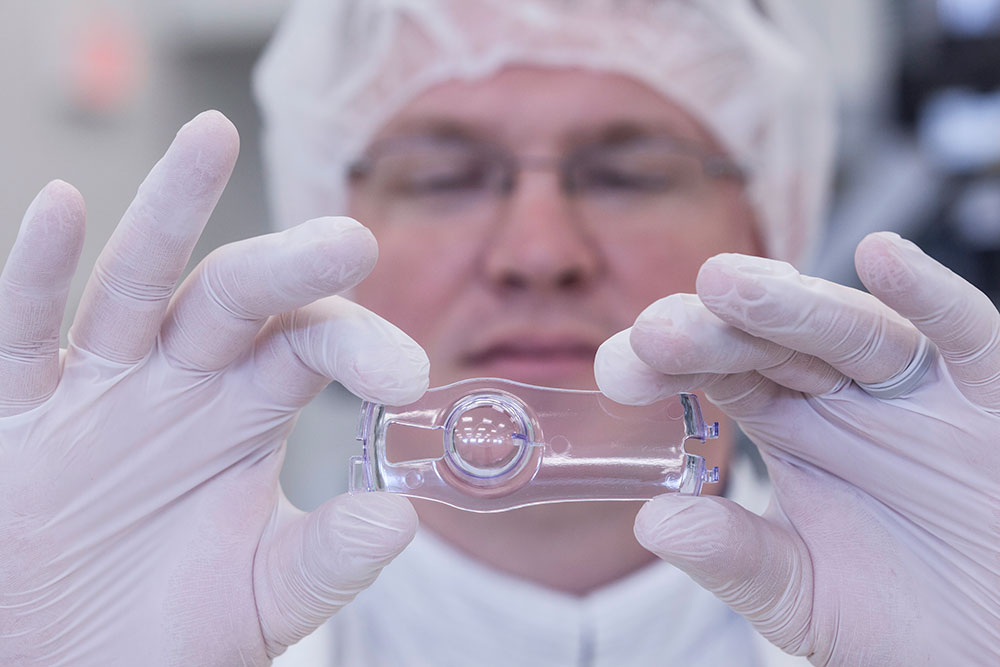
Product Design for Manufacturing: Geometry Optimization
Original Part Design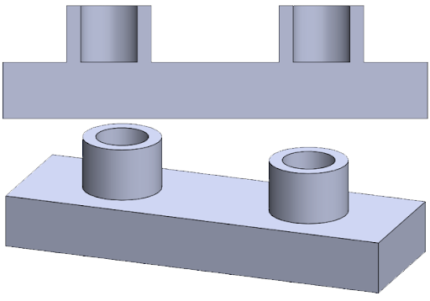
| Different wall thickness between boss and body of part can lead to sinks & voids in that region. |
| Increased cycle time to cool these regions will lead to increased part cost. |
| Potential for dimensional issues related to thick regions. |
Modified Part Design
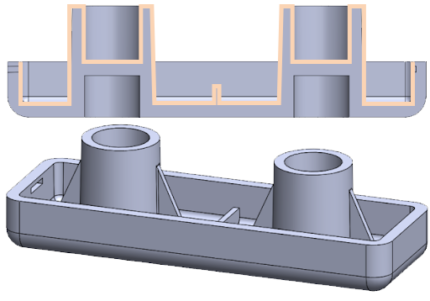
| Removed excess material. |
| Nominal wall thickness will reduce sinks and voids. |
| Reduced shrink variations (improved dimensional stability). |
| Improved part quality (high volume areas are prone to sink marks). |
| Faster cycle time will lead to lower part cost. |
Original Part Design
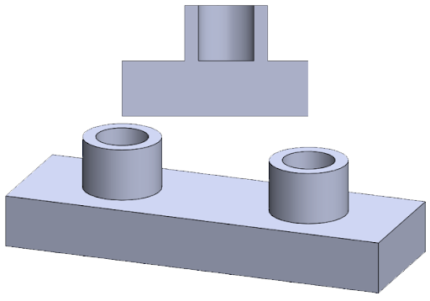
| Lack of draft can lead to increased pressure on ejection system and potential for damage to system. |
| Quality issues possible (drag marks & part deformation). |
| A-half assist could be required depending how the part shrinks to the cavity / core detail. |
Modified Part Design
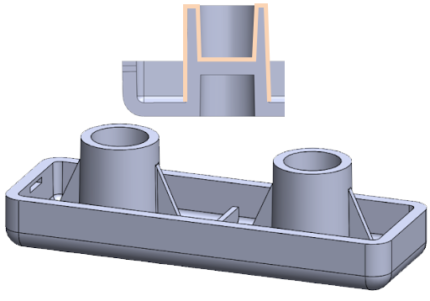
| Draft added to part body & bosses to help aid ejection resulting in less stress on ejection system. |
| Faster cycle times can often be achieved since the number of ejector strokes can be reduced. |
| Drag marks are often dramatically reduced or fully eliminated. |
| 1/8° degree minimum (higher when allowed based on part function). |
Original Part Design 
| No radii on part. |
| Difficult to produce sharp corners in tooling (exterior molding). |
| Sharp corners can become weak points in part, resulting in stress cracking & part damage. |
Modified Part Design
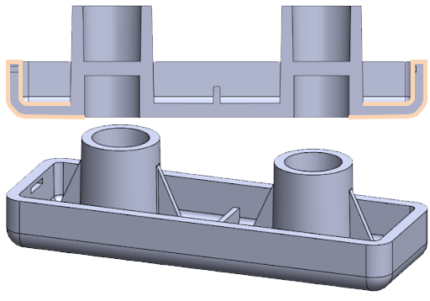
| Radii used with void coring to keep consistent wall thickness. |
| Inner radii recommended to be ½ min wall thickness. |
| Outside radii recommended to be inside radii + wall thickness. |
| Can help improve filling conditions as well as part strength. |
Original Part Design 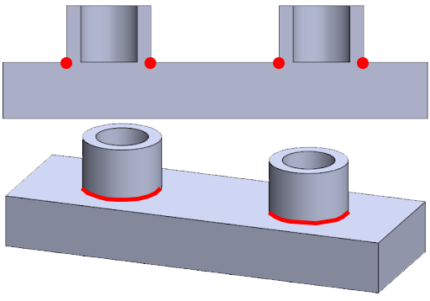
| Potential for part deformation in boss areas due to heat-concentrated regions. Usually, a challenging region to place cooling lines. |
| Poor rigidity & part strength in the area that intersects the main body of the part. Especially, under loading conditions. |
Modified Part Design
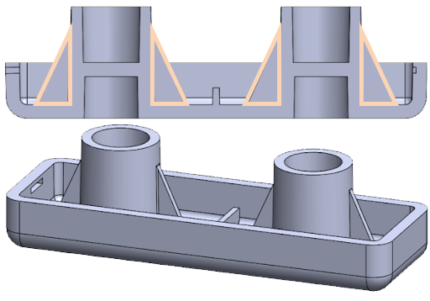
| Ribs added to increase part rigidity & dimensional stability. |
| Ribs are typically thinner than primary wall to help reduce issues with sink. |
| Gussets are typically triangular shaped. |
| Both features should be drafted adequately and should not impact overall manufacturability. |
Original Part Design 
| Undercuts are common on many injection molded parts. |
| Undercut in part above (right wall) could be produced with intricate tooling (i.e. Lifter) depending on distance of pull. |
| Increased tooling cost. |
| Increased chance of quality issues (flash). |
Modified Part Design
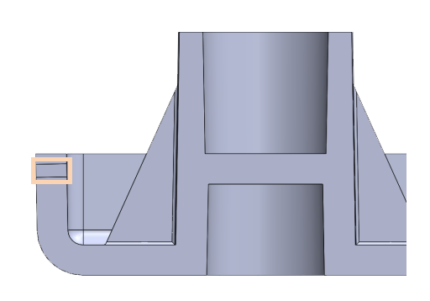
| Undercut redesigned to go through entire part wall (left wall), which can be produced using a slide insert. |
| Reduces the complexity of the mold design. |
| Reduces the chance of quality issues that could occur. |
Modified Part Design: Key Considerations 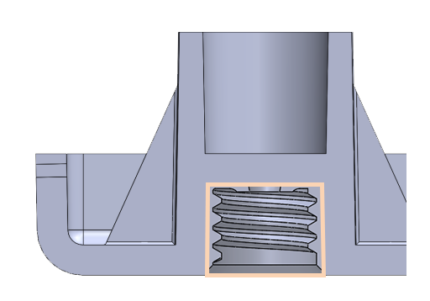
| Part volume can drive they type of unscrewing coring (hand-loads vs. servo motor). |
| Will the threads be reused in applications as this can be a key driver. Plastic threads will wear over repeated use. |
| Thread pitch is another key consideration as some systems cannot tolerate a fine thread pitch. |
Product Design for Manufacturing: Real World Example
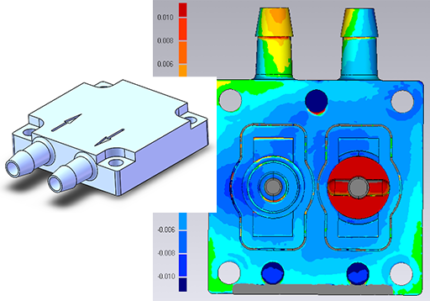
| 2-Cavity cold runner transfer tool that was awarded to Plastikos to run production on a microfluidic device. |
| Nominal wall thickness was 0.320” and our client was experiencing intermittent leak issues in assembly. This was also the region closest to the gate. |
| It was determined the leak was caused by a sink condition that occurred from such a thick wall. That sink mark would cause a depression in plastic ranging from 0.006” – 0.007”, as indicated in the scanning technology, shown above. |

| Void coring was added to reduce the nominal wall thickness to approximately 0.080”. |
| Raw material consumption was reduced by ~50% on part and runner, which also reduced the product cycle time. |
| Sink in this region was improved dramatically and the flatness on the part was improved to 0.002” – 0.003”. |
| Customer yields improved along with the ability to reduce parts cost from the cycle time savings and raw material consumption. |